Why have crows been attacking people in county?
 Ian Phillips/Getty Images
Ian Phillips/Getty Images"All of a sudden I had this real thud on my head... I thought, quite scarily, 'perhaps I'm being attacked'. I do Tai Chi, so I was ready to go on the defensive."
Jane Phillips is recalling the moment a crow swooped down and injured her head when she was walking along a footpath in Stapleford, Nottinghamshire, on 3 June.
"I put my hand up and unfortunately it was covered with blood, and I could feel it running down my neck, down my T-shirt," she said.
"I didn't see them coming because they came from the back and the side."
Despite not seeing the crow attacking, she quickly realised what was responsible.
The 74-year-old said: "I looked up and there was a couple of crows in the air, making this loud noise, just like, 'caw caw'."
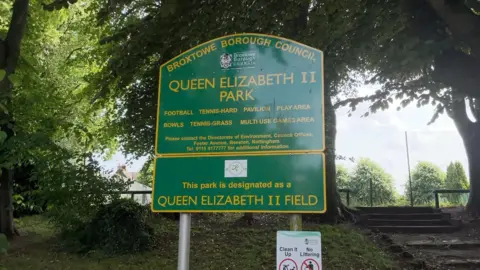
The wound to Jane's head - thought to have been caused by a claw rather than a beak - was so deep it needed glueing.
She posted about it on a community Facebook page to warn other people living in Stapleford, and quickly realised her experience was not unique.
"I'm just amazed not only by the number of people who were grateful for my post, but also several people are saying this is happening a lot," said Jane.
"It never occurred to me. You see the crows around but I was never aware that they could be a threat."
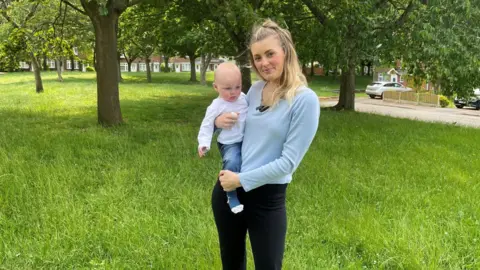
In Arnold, about nine miles from Stapleford, Natalie Cater and her neighbours are all too aware that crows can be a threat.
She heard about people being dive-bombed, where birds swoop down steeply, by corvids in the Spinningdale area last year, and the same has been happening during this year's nesting season.
The 29-year-old was walking to the shops on 30 May when she was chased and scratched.
"It was quite scary to be honest with you," she said.
"I heard two really loud squawks, and then behind me came two crows, so I ducked because they tried to go for my head, and then I carried on walking.
"Then I heard it again but there were three coming for me this time. I seemed to notice they were in packs.
"Then they tried to go for my head again and they managed to scratch it, so I legged it, and then they followed me. They were swooping behind me following me."
She said she was glad her baby son was at home with his dad at the time.
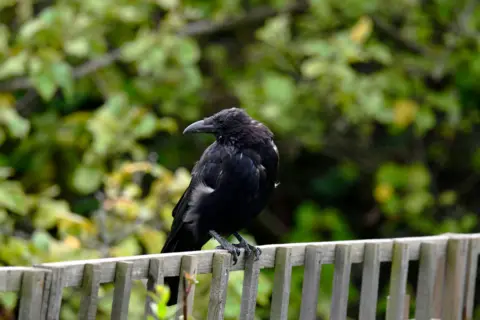 Getty Images
Getty ImagesElsewhere in Nottinghamshire, staff members at the Queen's Medical Centre (QMC) were warned about an "aggressive" crow near to one of the hospital entrances last spring.
The bird, nicknamed Russell Crow, was reportedly swooping down and pecking people on the head.
And it isn't just Nottinghamshire. People across the country have reported numerous crow attacks in recent years - including in Essex, Teesside, Dorset and Derbyshire.
So why does this keep happening?
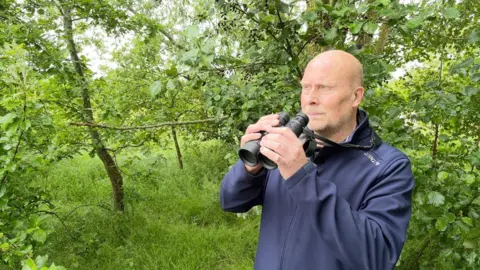
"Crows are seen as harbingers of doom, they are seen as birds of foreboding and birds of death," said Dr Rob Lambert, an environment academic at the University of Nottingham.
"Battle scenes in films like Braveheart, and Game of Thrones, often have dead people being pecked by crows after the battle, and Shakespeare wrote about crows, and they are part of our cultural literary story, and much of that presentation is negative in that crows are seen as somehow evil birds."
But Dr Lambert, who is also vice-president of Nottinghamshire Wildlife Trust, believes crows do not deserve their bad reputation.
He considers the incidents in Arnold and Stapleford to be "conflicts" rather than "attacks" and said they were a result of crows moving to urban areas to escape persecution in rural areas.
"We have for hundreds of years persecuted crows in agricultural areas. They are seen to impact on crops, they are seen to impact on livestock," said Dr Lambert.
"They have moved into urban areas and their behaviours have changed over decades, and they have become more confident and more ebullient, more confrontational than their rural cousins, who still live under this fear of persecution and fear of this idea of being seen as pests and vermin."
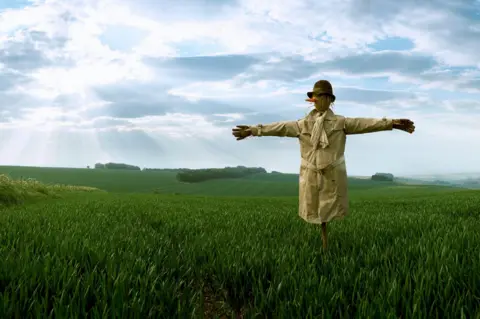 Getty Images
Getty ImagesHe said there were a number of species of crows in the UK, but those typically seen in urban areas were carrion crows and jackdaws.
After seeing footage of the crows that have been chasing people in Arnold, Dr Lambert identified them as carrion crows.
"The majority of these cases are simply crows defending territory, defending the food source, defending a nest site, defending fledged young, and they are instinctively reacting to any invasion into that space, and I would say that's particularly more relevant with people with dogs," Dr Lambert said.
"They are not coordinated dive-bombing attacks, they are simply a scare tactic that these birds are using to chivvy us away from an area that they perceive to be their territory."
And Dr Lambert has bad news for anyone with ornithophobia - a fear of birds - conflicts like these are likely to become more common in future.
"As we pave over the countryside, and as we change farming, and as climate shifts, birds are moving," he said.
"I think there will be instances of conflict between people and crows for decades to come.
"It's how we manage those conflicts, and it's how we avoid blaming the birds, and look at some of our behaviours, and look at some of our impacts on the wider countryside that are shifting and changing the maps of species across the country."
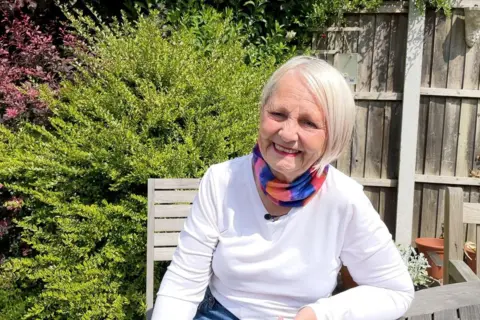
Does Dr Lambert have any advice for people worried about conflicts with crows?
"I think my advice would be to be very aware that there are nesting crows, then there will be young birds on the wing," he said.
"Feel free to carry a stick slightly higher above your head because they will strike for that, and be aware often if you're walking with dogs it might be the dog the crows are targeting, not yourself."
Dr Lambert said crows were very intelligent, and there were many cases of people befriending them and being brought gifts.
In fact, clerical officer Melony Lockhart managed to form a bond with the QMC's "aggressive" crow by feeding it, and in return the crow brought her the gift of a shiny chocolate wrapper.
Back in Stapleford, Jane is still healing from her head injury, but she does not hold a grudge against the crow responsible.
"I'm a fan of nature," she said.
"It made me aware perhaps we need to learn a little bit more to protect them, because they were protecting their young."
Follow BBC Nottingham on Facebook, on X, or on Instagram. Send your story ideas to [email protected] or via WhatsApp on 0808 100 2210.
